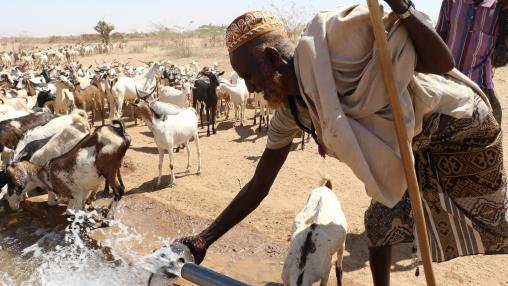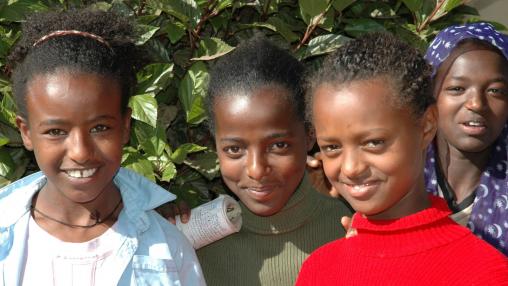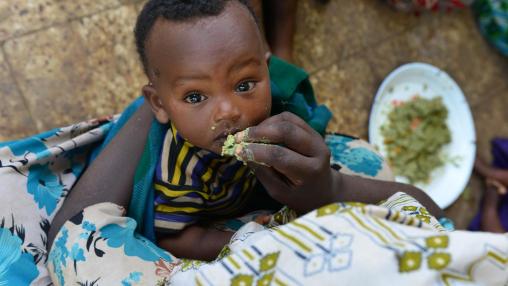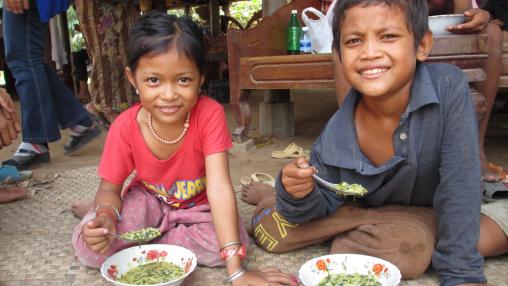Deepening Social Protection Systems: Enhancing livelihoods and health in Ethiopia
Twenty years after the establishment of Ethiopia’s Productive Safety Net Program (PSNP), a major social protection system, the country’s government, donors, and other stakeholders are implementing multidimensional graduation model programs that are designed to complement the PSNP’s monthly food and cash transfers. Graduation models include multiple interventions such as large asset or lump-sum transfers, training, savings promotion, and other forms of nutrition, health, or psychosocial support.

Hunger in Malawi: The El Niño Effect
The El Niño phenomenon, occurring on average ever 2-7 years, often causes reduced precipitation and drier-than-average weather in Malawi. These conditions in return result in poor agricultural conditions and reduced harvests. A new project paper from the Malawi Strategy Support Program examines the extent of El Niño’s effects on agriculture and identifies pathways to mitigate the subsequent impacts on hunger levels in the country.

Increasing resilience to climate shocks
This post originally appeared on IFPRI.org .
By Claudia Ringler and Turhan Saleh
Extreme weather events and other climate change-linked disasters have devastated communities globally: Be it cyclones along the coast of Southern Africa, flooding in parts of Canada, drought-induced wildfires in California, or the recent El Niño (ENSO) induced drought in Eastern and Southern Africa that affected 60 million people.

Social protection, household size, and its determinants: Evidence from Ethiopia
A recent working paper from IFPRI’s Ethiopia Strategy Support Program (ESSP) discusses how public policies, specifically those related to social protection interventions, may induce changes in household size or structure and how, in turn, these possibly unintended changes may impact the welfare consequences of the policies themselves.

Ethiopia’s PSNP and Child Nutrition
Ethiopia’s Productive Safety Net Programme (PSNP), which combines a public works program with unconditional cash and food transfers, is one of the largest safety net programs for household food security in Africa. But does it actually improve childhood nutrition in the country? A recent project paper from IFPRI’s Ethiopia Strategy Support Program (ESSP) explores this question and finds no evidence that the PSNP reduces chronic undernutrition in preschool-aged children; this finding could be the result of confounding environment, social, or economic factors that need to be addressed.

Food Transfers and Child Nutrition
In the 2016 Global Hunger Index (produced by IFPRI, Concern International, and ), Malawi ranked 88 th out of 118 countries, with 20.7 percent of the population suffering from undernourishment and 42.4 percent of children under 5 years of age suffering from stunting. In the lean season, food and nutrition security poses even more of a challenge; according to an assessment by the Malawi Vulnerability Assessment Committee, 2016 lean-season food insecurity (stretching from October 2015 – March 2016) was forecast to affect around 2.8 million people.

Regional Food Reserves to Increase Resilience
In 2011, agricultural ministers from the G-20 countries met in Paris to discuss how best to mitigate the adverse effects of price volatility following the food price shocks of 2007-08 and 2010-11. One of the outcomes of the ministerial was the creation of the Agricultural Market information System (AMIS), which aims to provide better and more timely information on market supply and demand and thus to enable more informed policymaking. Another outcome was the support of a pilot program to establish a regional humanitarian grain reserve in the ECOWAS countries of West Africa. The reserve w

New Efforts Focus on Economic Benefits of Improved Nutrition
Malnutrition places a significant economic burden on African countries, costing between 3 and 16 percent of annual GDP, according to a new working paper from the Global Panel on Agriculture and Food Systems for Nutrition (GLOPAN). Thus, improving nutrition in the region should not be viewed as just another development outcome; rather, nutrition interventions should be seen as potential drivers of development and economic growth in and of themselves.